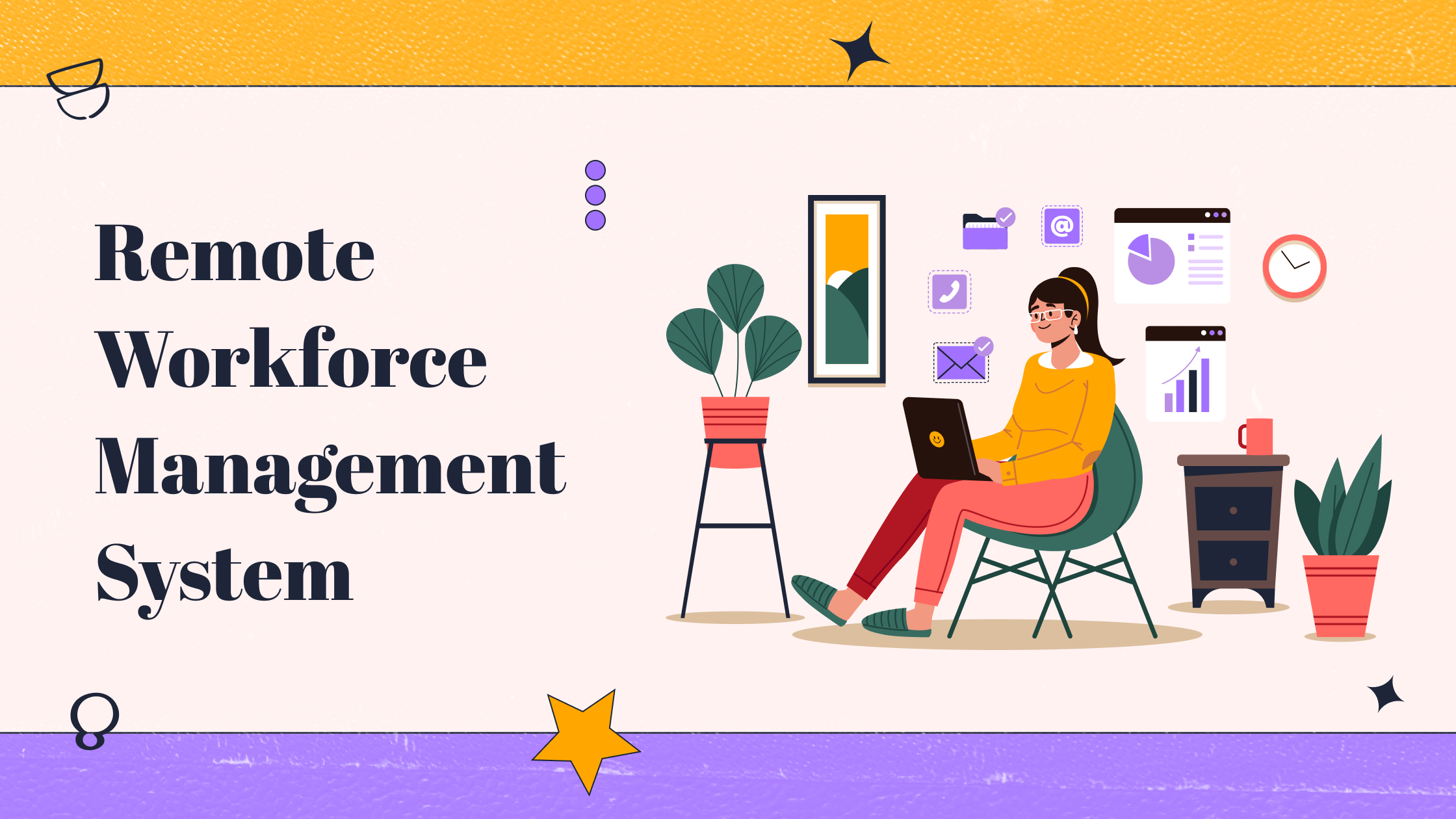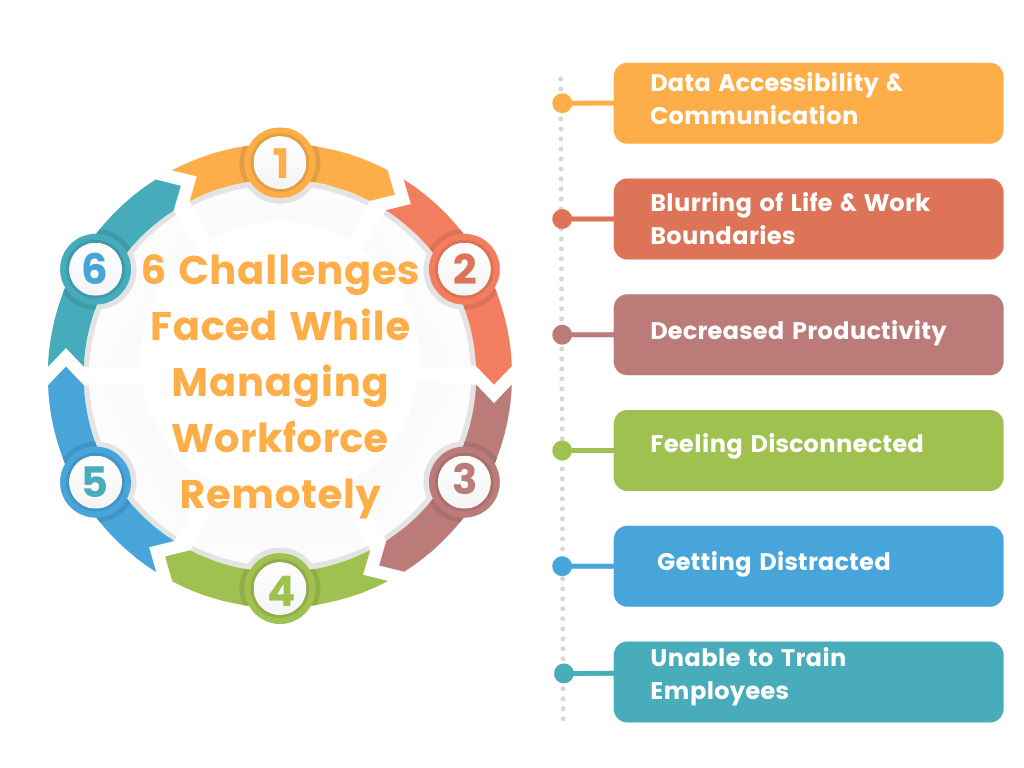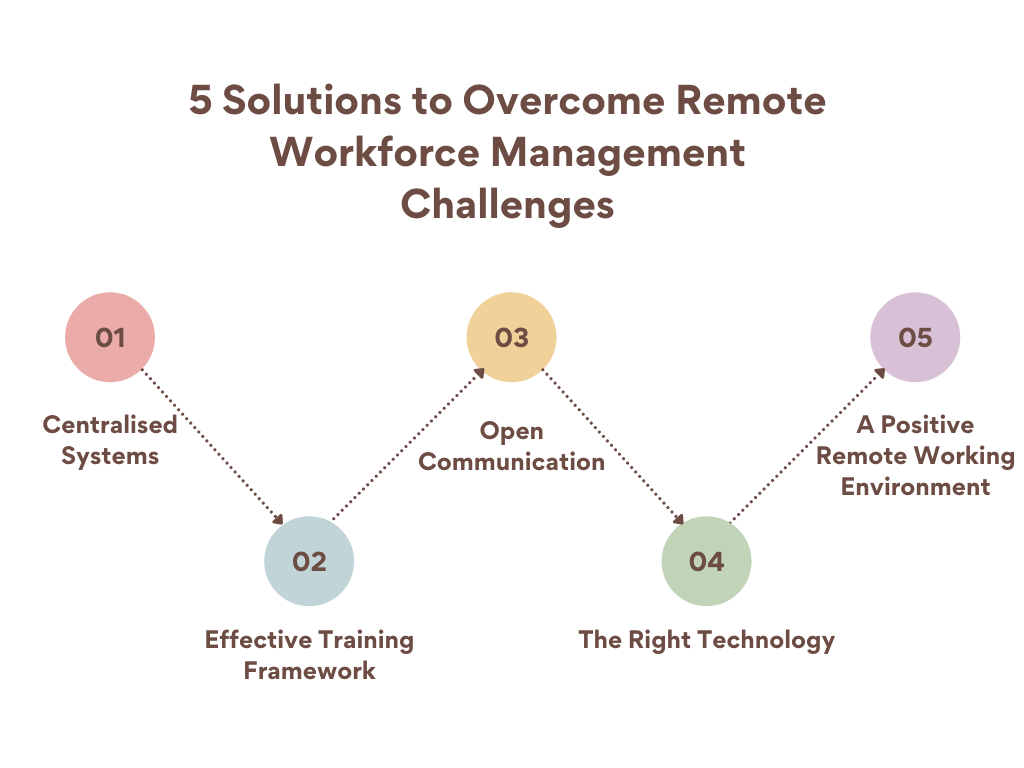UBS App is now Superworks

Of late, organizations across India have become brave enough to learn new things as well as adapt to unprecedented changes happening around. The wave of remote working is an excellent example of this. Although the concept of remote workforce management came with a host of challenges initially, businesses slowly adapted to it along the way.
Fast forward to 2022, employers have taken the lead and are now enjoying a number of benefits – cost savings, convenience, a wider talent pool, a better working environment, and many more. In simpler words, now it is no longer a matter of planning remote work – it’s about equipping your remote employees and making rapid strategic adjustments around this new way of working.
Let’s dig deeper into the blog and understand how companies can ace remote workforce management today and in the time ahead.

As the name suggests, it is the practice of efficiently managing and supporting remote employees.
For the unintended, remote workforce management includes several processes such as open communication, employee engagement, overseeing employees’ performance, and addressing their concerns in a timely manner.
With the right blend of strategies and technology implementation, any and every company can ensure efficient people management.

In a remote working model, employees are scattered in different locations.
To effectively manage and unify such a workforce, employers first need to understand the challenges.
Solving the challenges will help them focus more on employees while working remotely.
That being said, here are the top six people management challenges faced by most companies out there:
HRs require several data to carry out human resources operations in a remote setup.
Now accessing the information stored and managed in spreadsheets is relatively easy; however, the ones stored in files and folders are the real problem.
Besides, HR managers cannot interact with their employees as effectively as they can in an office setup.
The second problem while managing a remote workforce is blurring the work-life balance.

HRs often find them juggling between professional duties and house chores.
Say, for instance, answering calls of employees while having lunch or receiving queries from them late at night.
All these usually negatively impact the work balance of managers while working from home.
Due to the point, we discussed above, HRs and leaders typically end up feeling exhausted and burned out by the end of every day.
As a result, they fail to put their best foot forward to critical tasks of the business.
They even fail to provide a good employee and customer experience that in turn affects the bottom line of the company.
Unproductive HRs and leaders slowly start feeling isolated, disconnected and disengaged.
Lack of communication and collaboration is the major reason for this.
By lack of communication, we do not mean work-related meetings but the water cooler gatherings/talks that often kept employees happy and engaged.

No matter how comfortable working from home feels, we cannot deny that it includes a number of distractions than offices.
From kids watching TV to answering doors every time someone comes over, working from home can be tough and acutely distracting.
Last but not least, one of the most prominent challenges HRs face while managing a remote workforce is their training.
Since outdated tools and methods do not function effectively in a remote setup, HRs and leaders find it painful to train new and existing employees scattered in different locations.

Now that you know the challenges you may face in remote workforce management, let us talk about the five solutions for these issues:
It is high time for companies to leave behind paper-based and outdated systems, especially when there are a host of intelligent alternatives in the market today.
Companies should rely on automated HR technologies to store and manage vital data in the cloud.
With such systems, HRs and leaders can access data anytime, anywhere, that too, using any device.
Secondly, companies must use modern tech options and a comprehensive training policy.
To effectively manage the remote workforce, HR executives and managers should have a clear understanding of the training strategies and software applications they may use.
When they have clarity, they will be empowered to train new and existing employees effortlessly.
Without a doubt, open communication can work wonders in a remote work model.

From using automated technologies for facilitating 24*7 communication channels to encouraging one-on-one interactions, employers should do everything to foster collaboration in the remote workplace.
Also, companies should arrange team gatherings where employees and HRs can discuss things apart from work.
To make all of the above-mentioned things work, employers should primarily invest in one of the best workforce management software.
Such systems will streamline and automate every workforce-related operation, thereby taking the burden off HR executives’ shoulders.
The right technology will help HRs and leaders to manage the remote workforce effortlessly.
Last, but not least, companies should make peace with the fact that not everyone can be comfortable while working remotely.
So, employers should create a positive work environment using soft skill development training, group activities, and much more.
A positive working environment can make remote workforce management simple and efficient.
The Corona pandemic has changed the world of work in many ways, including the workforce management system.
So, companies that want to effectively manage their workforce and keep their business afloat must keep the aforementioned tips in mind.
What are you waiting for then? Implement the right technology and keep your remote employees satisfied, engaged, and productive.
We are here to help you find a solution that suits your business need.
Get a visual representation of how we work!
Schedule DemoOur sales expert is just one call away to meet your needs.
Get In TouchHave a question?
Chat with Us